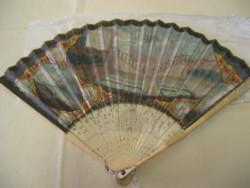
Fig.1 Fan leaf of around 1780, referring to the sovereignty
of D. Maria I and D. Pedro III over the Portuguese Empire in the Orient.
Left and right are the Oriental peoples, whereas in the centre, an angel
holds the coat-of-arms with the portraits of the two sovereigns. The
sticks appear to date from a later period (1830-40).

Fig.3
Detail of Fig. 1 above

Fig.5 Celebrating the rise to regency of Prince
D. João, future King D. JoãoVI. The ivory fan is finely
carved and a typical work of China. It dates around 1799. It is not
sure whether the portrait miniature was painted in Portugal, or, after
a painting, done in China.

Fig. 7 This
fan was commissioned for the marriage of King D. Carlos with Queen D.
Amélia. It is painted by the Portuguese ceramics painter, caricaturist
and social critics Rafael Bordallo Pinteiro. 1886.
A visit to the "Museu Nacional do Traje" in Lisbon

The National
Costumes Museum is located in the 18th century Angeja-Palmela Palace,
in the north of the city of Lisbon. The splendid rural estate, surrounded
by a large botanical park, was once the property of the Marquis of Angeja,
Prime Minister in the late 18th century. In 1840 it was purchased by
the Marquis of Palmela. In 1977, the Museu
Nacional do Traje e da Moda opened in the historical building.
The Museum's fan collection is relatively young, dating back to 1922 when the Museu Nacional dos Coches (National carriages museum) acquired 2 Empire fans . Since then, the Museu do Traje took over the collection of Royal Fans from that museum, and its collection was enlarged by donations and bequests .
Due to its commercial relations to the Far East, Portugal served early on as "intermediary" for fans, in particular folding fans. Despite (or because) of its good connections to the original manufacturers of folding fans, it never developed an important fan manufacture itself. Thus, most of the more than 300 fans owned by the museum are of Eastern origin, or stem from European manufacture, mainly France. The fans shown on this web page are a personal selection of mm, for their historical relation to Portugal, or for their rarity and beauty, or both.
The collection is not permanently exhibited (for preservation reasons). At temporary exhibitions, fans are shown, most often as costume accessories.
My thanks
go therefore to the patience of Dina Dimas, Curator,
and Xénia Ribeiro, Assistant , who showed me
a selection of the most interesting fans of the museum. This selection
was made by Paulo Campus Pinto, who is an art historian
and currently writing the first book on Portuguese fans.
My special thanks go to the Director, Dr. Madalena Braz Teixeira,
who, very unbureaucratically and efficiently, made this visit possible.

Xénia Ribeiro (left) and curator Dina Dimas

Fig.8 Imposing ostrich feather fan that
belonged to the Duchess of Palmela; 1890.

Fig.2
Reverse of a mid-18th century fan, showing elaborate gardens in the
spirit of the time. Unfortunately, they could not be identified. The
ivory sticks are piquéd, the guards have mother-of-pearl layers
at the head and the end.

Fig.4 Obverse
of Fig.2, showing the expertly painted detail of a mythological scene.

Fig.6 Fan painted by Paul Gavarni (1804-1866) for the
marriage of Isabel de Montpensier, mother of Portuguese Queen D. Amélia.
The reverse of the vellum and ivory fan is decorated with the crowned
initials of the owner.

Fig.10 Portuguese Publicity fan advertising for "Casa
dos Espartilhos", the "house of corsets", located in
the chic centre district Chiado of Lisbon, beginning 20th c.